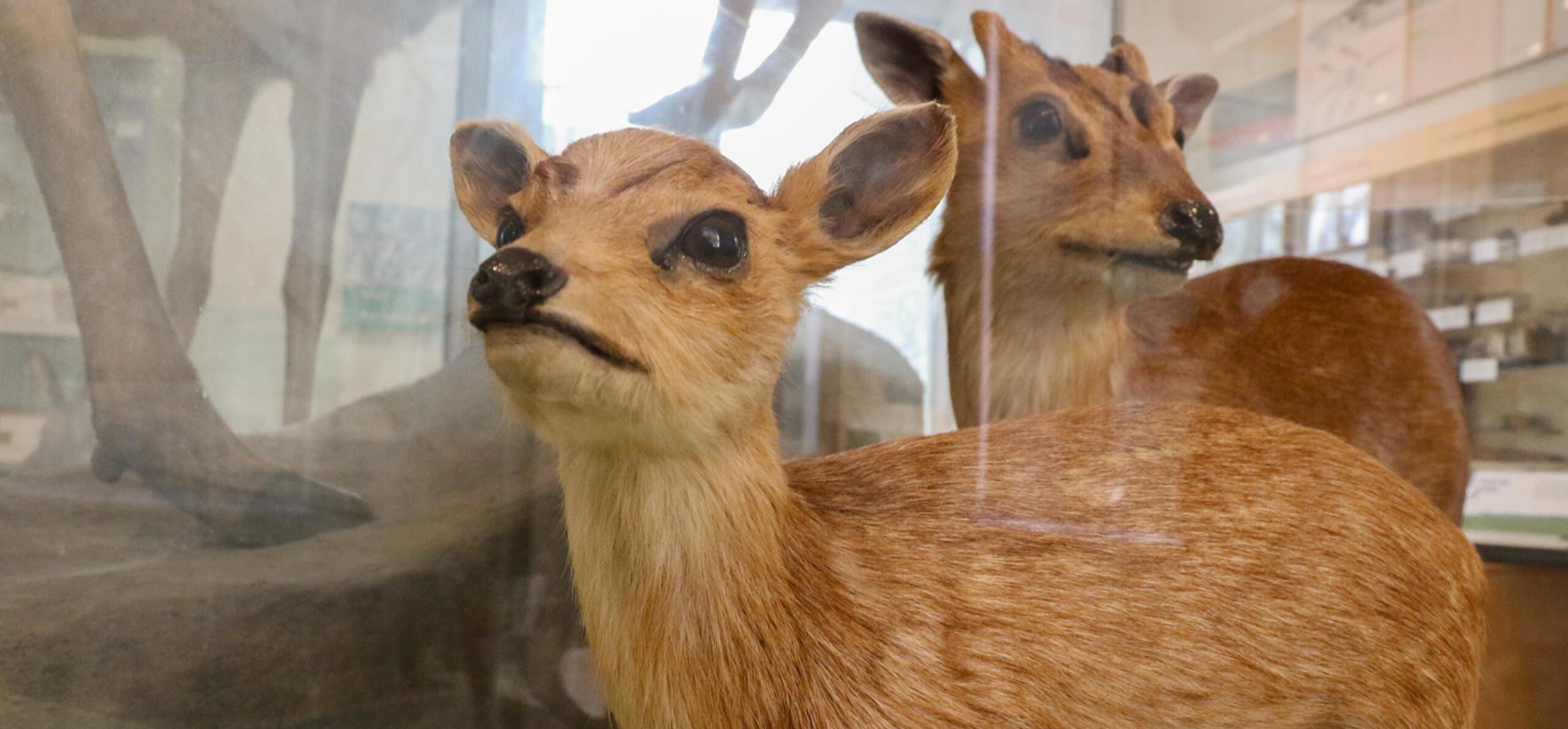In the last 150 years, Reading's townscape has been transformed. The town's population soared from 19,000 in 1840 to over 190,000 today, catalysed by the construction of infrastructure like the railway and the arrival of new factories, shops, and businesses.
These changes have had a heavy impact on Reading's wildlife. Many areas that would have provided habitats like woodlands, heaths and commons have been lost. At the same time, other habitats have emerged within the urban landscape as animals have adapted to their changing surroundings.
In this blog, find out about the wildlife that you can see in our town today, with examples from the collection displayed in the Green Space at Reading Museum. And if you have a garden, learn some simple changes that you can make so that can provide greater care and sustenance for our local animal populations.
Muntjacs
Gardens and parks make up one of the largest habitats for Reading's wildlife. These spaces support the growth of a wide range of plant life: some planted deliberately by gardeners, others growing purely by chance. In turn, these sustain a variety of animals. In fact, many have adapted to modern urban life in towns by making their homes in these areas.
One example of these in Reading is muntjacs. These are dog-sized deer that come out at night at the edges of the town, entering gardens to snack on vegetables and flowers. Though the muntjac was only recently introduced in Britain, their population has quickly grown across the country.
Next time you're in Newtown, keep an eye out for the muntjacs that live in Reading Old Cemetery at Cemetery Junction.
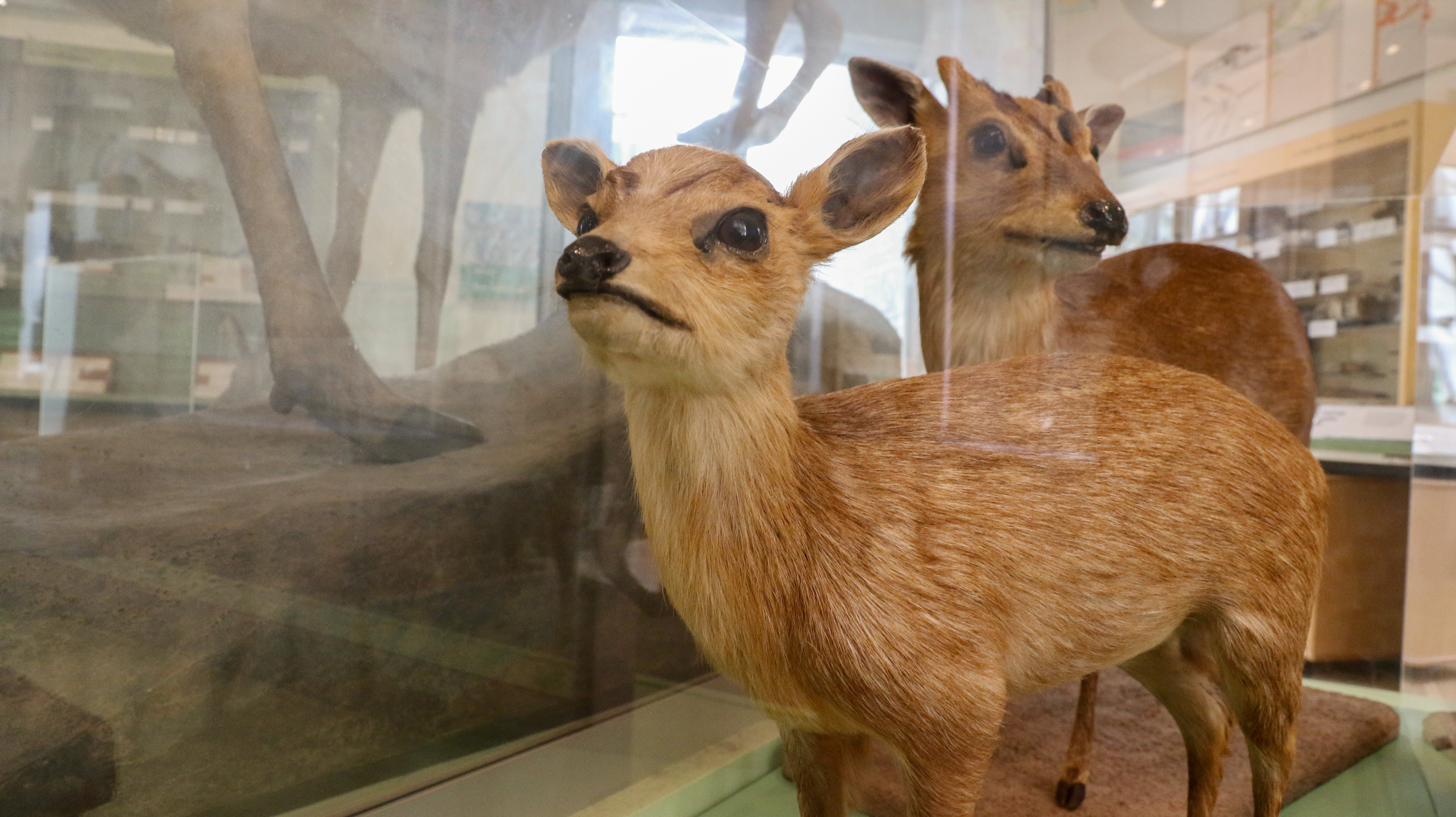
Muntjacs in The Green Space, Reading Museum
Hedgehogs
Another critter that you'll find in gardens at night is the hedgehog. As cute as they are prickly, hedgehogs help gardeners by eating slugs and other pests. They spend much of their life asleep, hibernating in the winter months and sleeping in the daytime. However, they can travel over a mile throughout a single night.
Sadly, hedgehog numbers are declining in the UK, which may be due to lack of food and places to shelter. If you have a garden, there are many ways that you can make it more hedgehog-friendly.
- Leave gaps under fences so that hedgehogs can pass through - they're a bit too small to open a gate!
- Maintain wild areas of the garden with piles of leaves or logs, perfect for a hedgehog nest.
- And put out water and dog or cat food at night for them to eat.
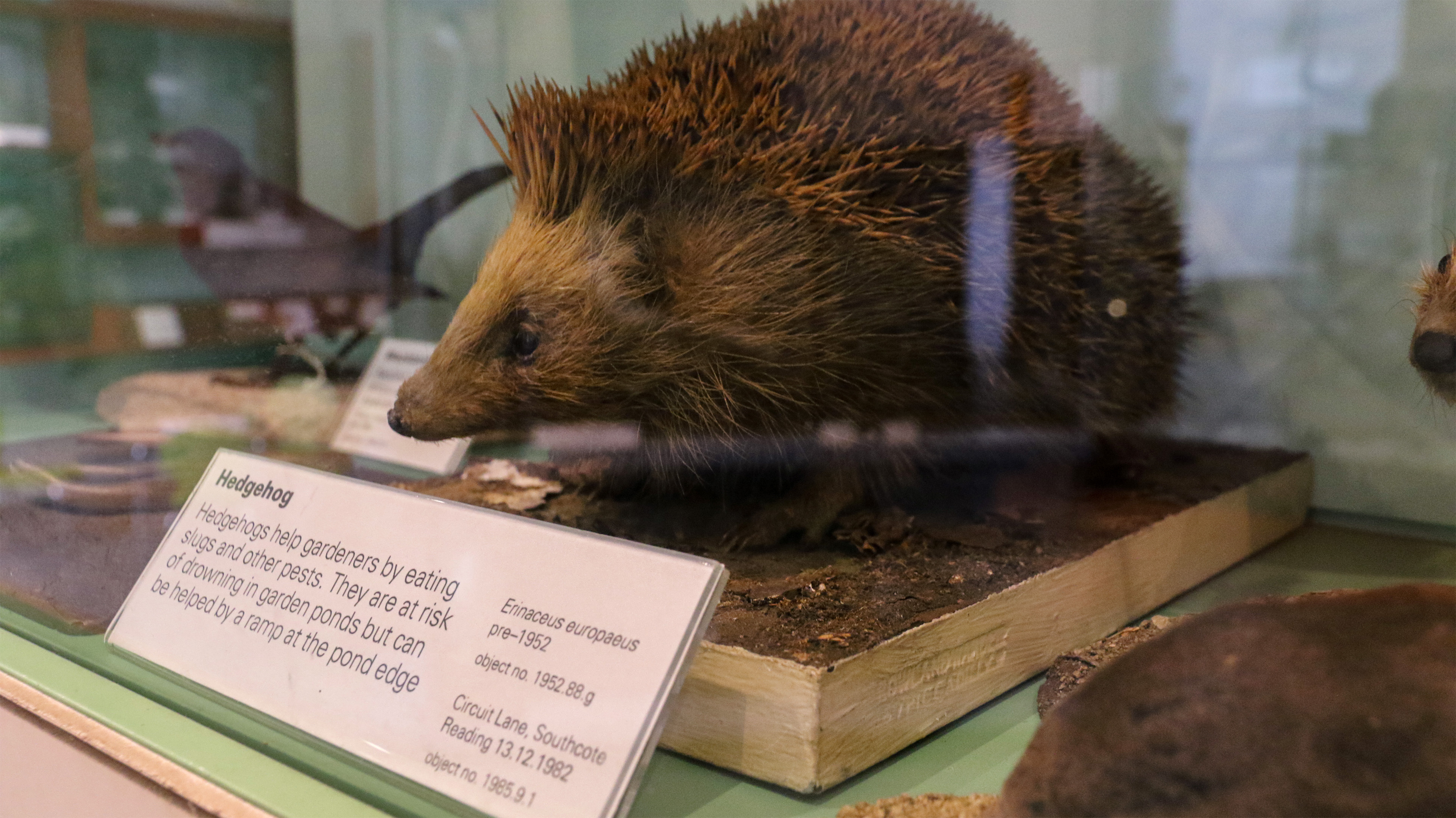
A hedgehog at The Green Space, Reading Museum
Stag beetles
Stag beetles are nationally scarce in Britain, but in some years they are not uncommon in parts of Reading. As Britain’s largest beetle, they're well-known for what's commonly recognised as impressive, fearsome antlers. In fact, these are actually modified jaws!
Adult stag beetles emerge in around May and June. Males can often be seen flying (loudly and even clumsily) at dusk in search of females. They may feed on tree sap or, like many adult insects, not eat at all. They die after breeding, and by autumn the adult population will pass away. Their larvae can take up to five years to develop in rotting wood, so to help the stag beetle population grow, why not leave out logs or tree stumps if you have a garden?
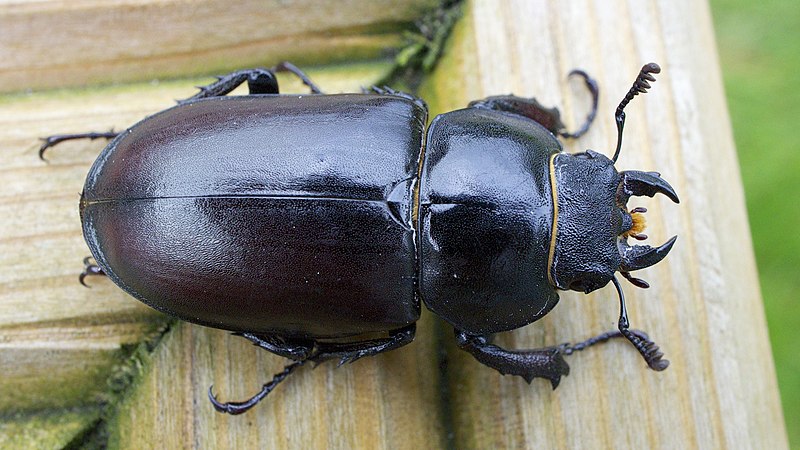
A female stag beetle photographed in Dorset (Credit: Ian Kirk from Broadstone, Dorset, UK, CC BY 2.0)
Swifts
Whilst gardens and parks are one of the largest habitats for wildlife in Reading, man-made structures like buildings also provide for habitats of animals and birds.
Swifts are medium-sized birds, all-dark, crescent-shaped in flight, with fast, flickering wingbeats. They are highly adapted for life in the air, landing only to nest and rear their young. They catch flying insects and even mate in flight!
Swifts are summer visitors, arriving early in May and departing from mid-July once their young have fledged. They are all gone by the first week of August. As they spend the rest of the year in Africa (exactly where is still a mystery!) they’re really African birds that come here to breed.
Groups of screaming swifts flying at roof height can be seen and heard especially when they first arrive. Oxford Road is a good place to see them as there are a lot of large, older buildings. It’s important to record breeding swifts so check out the RSPB swift survey.
Swifts create nests in holes and crevices in the roofs of buildings, especially older buildings. Swift population numbers are decreasing partly due to lack of nest sites, so adding swift boxes to new buildings can help them by providing safe places to nest.

A swift at The Green Space, Reading Museum
House martins
Another summer visitor that can be confused with swifts is the house martin. This small glossy-black bird has a white underside and a flash of white above the tail. They are very obvious as they flutter and jink in flight, catching flying insects. House martins are in the UK from April to October, spending the rest of the year in Africa.
House martins traditionally built their mud nests on cliffs but now they can more often be found under the eaves of buildings. Several pairs will often nest together in a small colony, and they return to the same site each year and patch up nests to reuse.
They have been declining across Europe since the 1970s, possibly due to changes in weather and degradation of their habitat in Africa. They are sometimes also persecuted because people think they’re messy, but in the UK birds and their nests are protected by the Wildlife and Countryside Act, 1981. In Shakespeare’s day, people were happy to have them nesting on buildings; a swift is the bird described as a ‘temple-haunting martlet’ and associated with divine favour at the beginning of Macbeth.
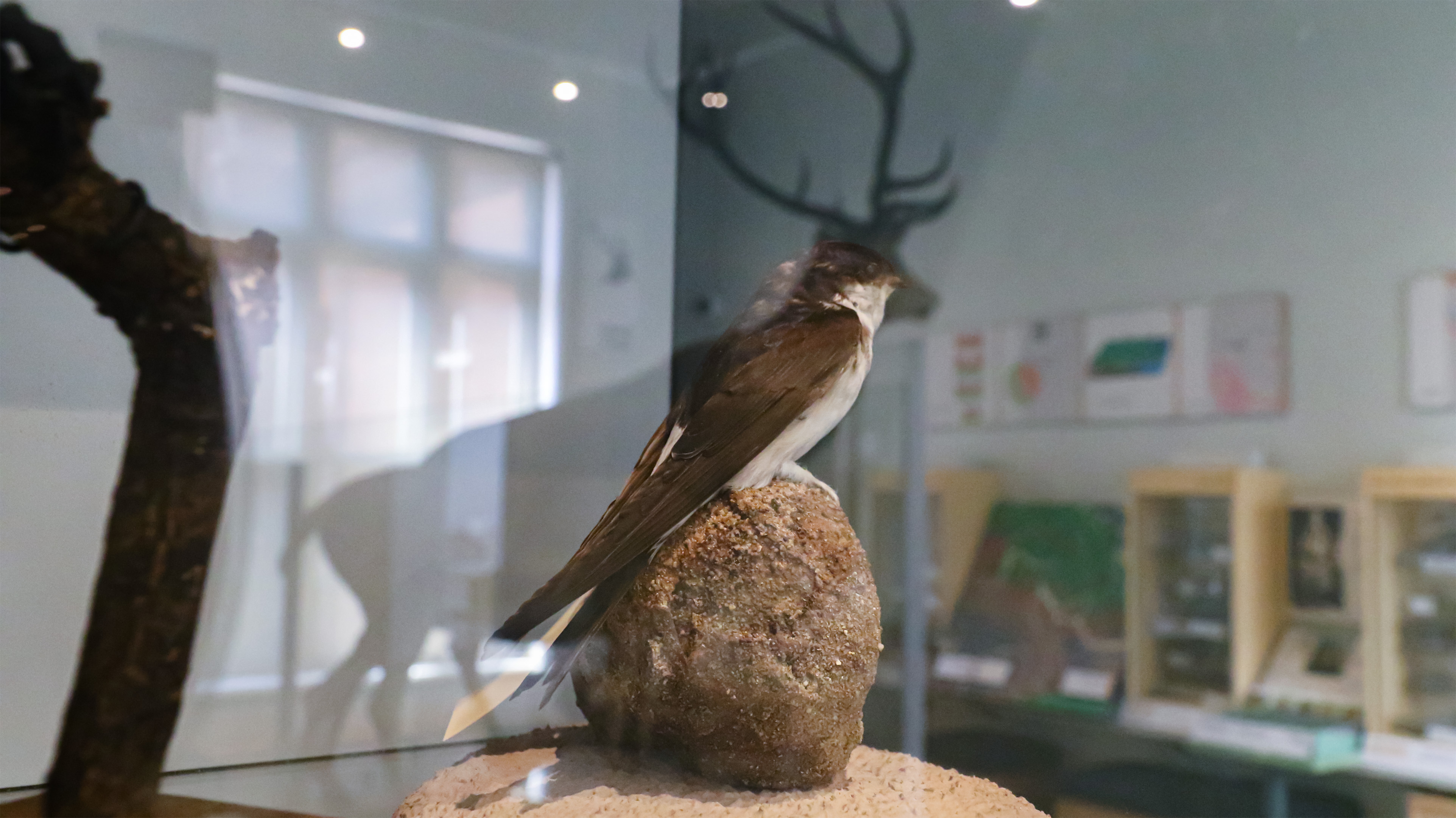
A house martin at The Green Space, Reading Museum

Make your garden more wildlife-friendly by leaving wood or trees stumps for insects to inhabit. And for hedgehogs, leave gaps under fences so that they can pass through. Check out the Wildlife Trust for more ideas.
Record breeding swifts on the RSPB swift survey to help build a picture of nesting sites that need protecting.
Find out more
The Green Space at Reading Museum explores the natural history of the Reading area through hundreds of specimens and objects. Plan your trip to the museum today. Visiting is free.
This article forms part of Reading Green Stories, where each month we'll be using different parts of our collection to highlight issues related to climate crisis and sustainability in the world today. Next month, we'll be focusing specifically on how Reading's animal populations have changed throughout time, and reflecting on what's changed among Reading's animals since we first displayed our Green Space gallery.
